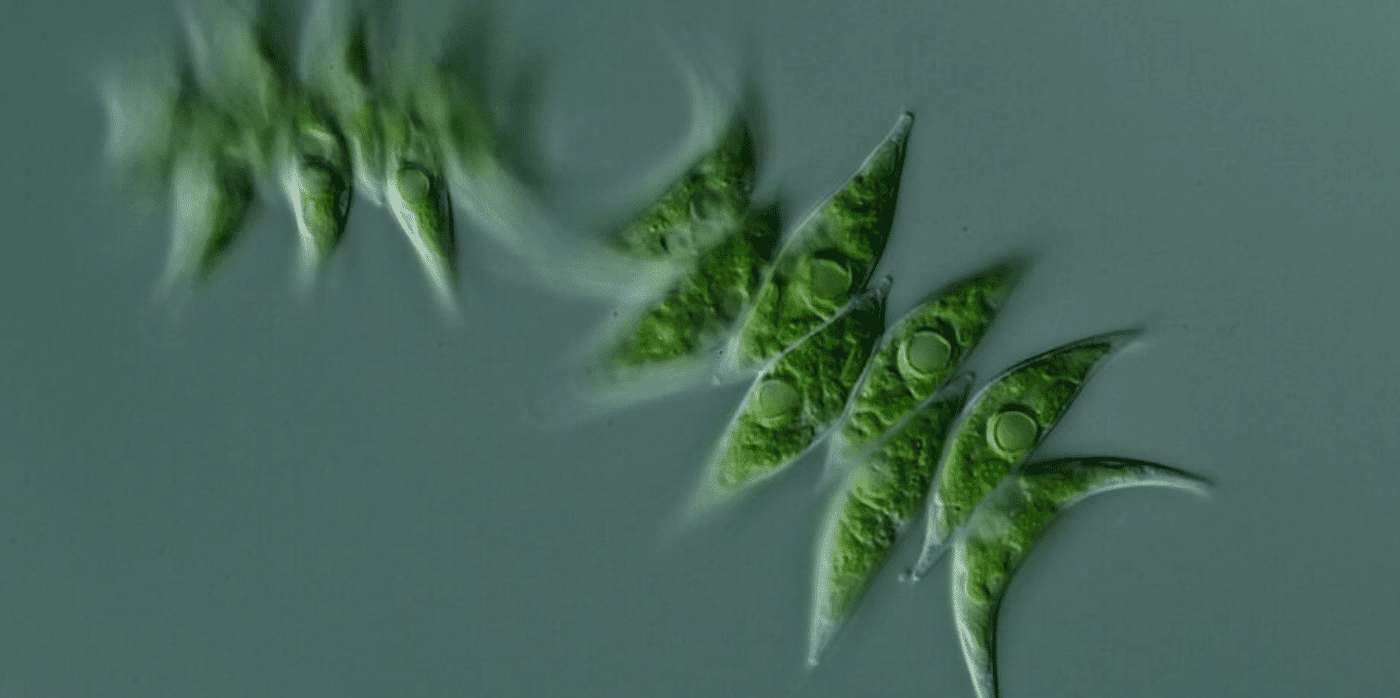
Spotted: Wastewater, such as that containing sewage and agricultural runoff, generally contains an overabundance of phosphorus. This can lead to increased growth of algae and large aquatic plants, which can produce toxins and result in decreased levels of dissolved oxygen in the water, a process called eutrophication. Traditional methods for reducing phosphorus in wastewater generally involve chemicals, which are energy inefficient and can themselves cause problems. Now, a nature-based process for removing phosphorus, developed by start-up I-Phyc (‘Industrial Phycology’) is gaining traction.
I-Phyc’s solution is a circular process that uses algae to remove phosphorus, ammonia, and other harmful contaminants, including steroids, and insecticides. At the same time, the growing algae locks away carbon and produces biomass from which sustainable products can be created. Algae thrive in water containing an excess of nutrients. I-Phyc’s process deliberately applies algae to wastewater treatment in a controlled way, allowing the algae to do its work before the final, cleaned effluent is discharged to the watercourse.
The company claims that it is able to consistently remove between 50 and 99 per cent of pollutants without the use of chemicals. In addition, the biomass produced by the algae contains a number of compounds that can be used commercially. I-Phyc helps wastewater treatment operators to harvest the algae and transform it into useful products, including fertiliser, poultry feed, sustainable feed stock, biogas and specialist oils and lubricants. The entire process is carbon negative.
I-Phyc has recently raised £2.3 million (around €2.6 million) in an investment round led by Mercia water and Mellby Gård AB. In a press release, Kiran Mehta, Investment Manager at Mercia, said, “Our previous investments helped I-Phyc to develop and roll out its technology and it is now attracting huge interest within the industry. With water companies trying to meet ever increasing water quality standards and challenging carbon emission goals, new technologies will have a key role to play. This new funding will help position I-Phyc as a leader in sustainable water treatment solutions.”
Wastewater treatment can be an energy-intensive process, so it is no surprise that we here at Springwise have seen a number of innovations aimed at developing more sustainable treatment methods. Some recent projects includes an easy-to-use device that disinfects water using sunshine and a solar catalyst that can treat wastewater in a manner similar to photosynthesis.
Written By: Lisa Magloff

